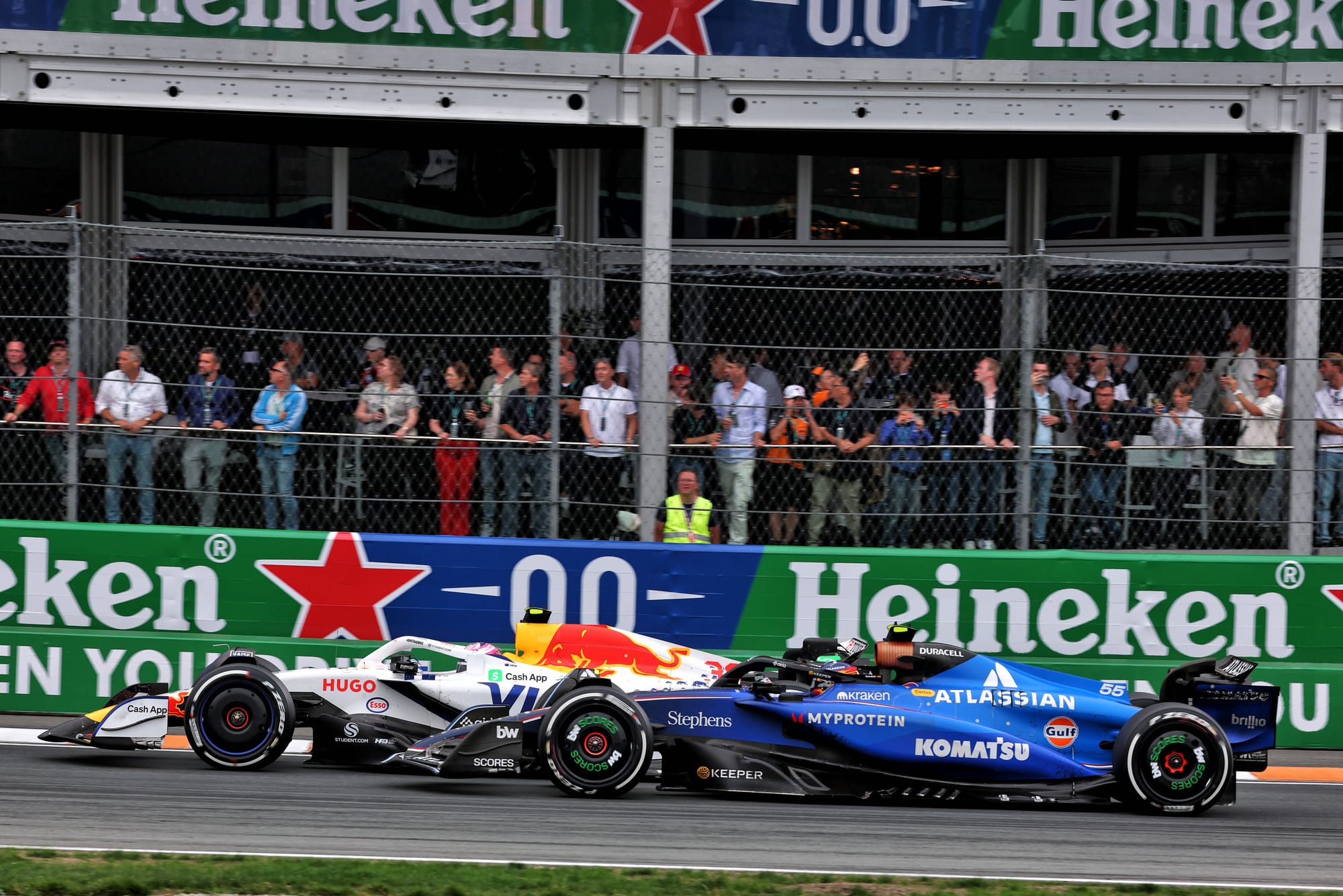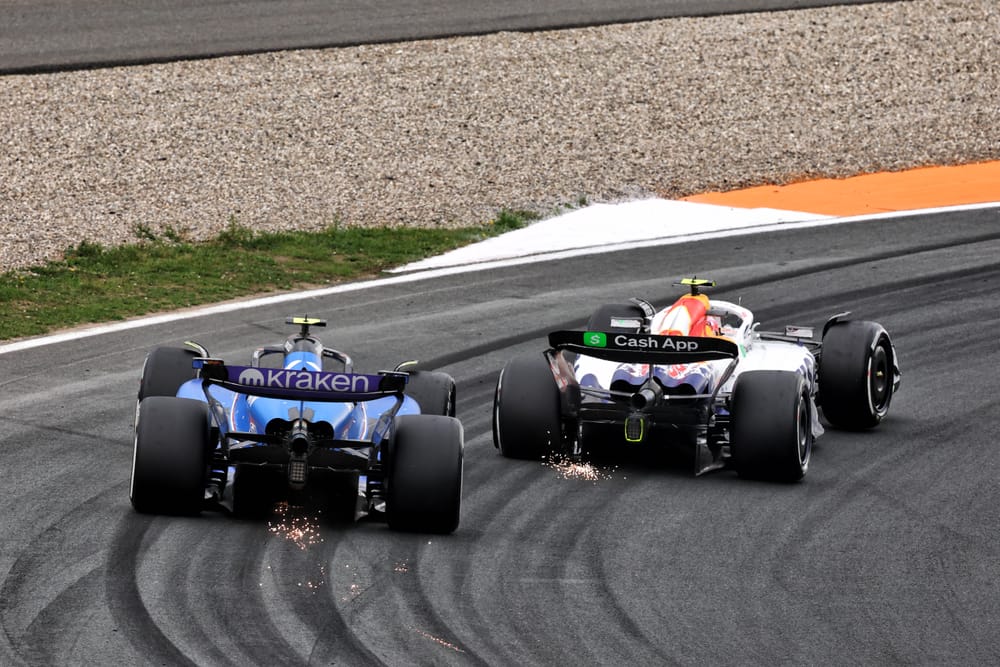The FIA's admission that it got it wrong in punishing Carlos Sainz for his Dutch Grand Prix clash with Liam Lawson holds significance beyond just the Williams driver's Formula 1 penalty points being scrubbed.
While Williams's pursuit of a right of review over the stewards' decision to penalise Sainz at Zandvoort was chiefly motivated by wanting to wipe Sainz's two licence points, the case had opened some wider debates in F1.
This included both how the stewards ended up reaching their original decision and the entire framework of racing rules that drivers operate to.
It is why Sainz had found plenty of allies in the pitlane who had been confused about why he was deemed to be the guilty party – amid fears that a can of worms had been opened in terms of what was and was not allowed from now on.
So with the FIA having reconsidered things, there does appear to be a little bit more clarity about where the boundaries are.
Driving guidelines fears eased
Sainz had been left incredulous by being given a 10-second penalty and points on his licence for the clash with Lawson.
He fully accepted that under the terms of F1's current Driver Guidelines, he had no right to any racing room on the exit of the corner – as his front axle had not been alongside that of Lawson by the apex.
However, he felt there was quite a philosophical leap between any subsequent collision being a 'racing incident' and the driver on the outside being punished for it.
Speaking in the immediate aftermath of the incident, Sainz said: "It's unacceptable. I think it's not the level of stewarding of Formula 1 if they are really considering that to be a 10-second penalty on my behalf.
"I think it's a serious matter now that concerns me as a driver, as a GPDA director, and something that I will make sure I raise."
The main worry was that if similar collisions to Sainz/Lawson were going to trigger penalties for the car on the outside from now on, then that opened the door for drivers on the inside to take liberties.
In theory, it greenlit an approach where a driver just needed to defend hard on the inside, ensure their rival on the outside did not beat them to the apex, and then they could slide wide on the way out to hit them – earning their opponent a penalty in the process.
As Sainz's team-mate Alex Albon remarked recently: "It feels like the inside driver just has far too much power in the rulebook and is almost completely in control of his destiny, whereas the outside driver just needs to comply.
"In terms of racing drivers, there's give and take in every situation, and at the minute it doesn't seem like…there's no remorse for the outside driver and it creates what feels like strange penalties."
This is why if the FIA stewards had stood by the original Sainz sanction – especially with that element of Lawson having had a momentary snap of oversteer midway through the turn that changed his trajectory – a new way of racing would have been followed.
Drivers know where they stand

The stewards' reconsideration that the Sainz/Lawson collision was indeed a racing incident came from its new viewpoint that responsibility for what happened had shifted a little based on new evidence.
The new onboard footage had shown the impact of Lawson's mid-corner moment in changing his trajectory, so meant he was not totally innocent in what happened.
In the FIA statement from the Right of Review hearing, it said that Lawson's momentary loss of control had been a contributing factor to the clash.
It added: "In the stewards' assessment, no driver was wholly or predominantly to blame for that collision.
"Car 55 [Sainz] contributed to the incident by taking the risk to drive close to, and on the outside of, car 30 [Lawson] when car 55 had no right to room there and there was a real possibility that, if the collision had not occurred where it did, car 55 would run out of track at the exit and/or a collision would have occurred at the exit for which the driver of car 55 would likely be predominantly if not wholly to blame."
The messaging here is now at least clear for drivers, and is logical.
It is that if they are on the inside, while they do have the full right to racing room, they only maintain that if they remain fully in control of their car.
Furthermore, for drivers on the outside, it is not automatic that they have to give up a corner immediately if they are beaten to the apex.
But they will be held responsible if there is a collision as a result of them being somewhere they should not be – so they need to be ready to avoid it.
Qatar meeting and FIA open door policy
The fact that the original Zandvoort penalty has been proven to be wrong will bring some solace to drivers – as it puts their understanding of the Driver Guidelines back to how they were before.
However, it is clear that, based on what happened at Zandvoort, as well as the Sainz collision with Ollie Bearman at Monza, there remain situations not fully covered by the guidelines.

This is something that will now almost certainly be worked on between the drivers and the FIA, as it has always been pretty clear that the Guidelines are a living and breathing document.
The FIA's stance with the drivers has been that it is open to discussing and agreeing on any necessary changes – because it is in the interests of everybody to have rules that everyone agrees on.
If change is needed immediately to clear up a grey area, then it is not impossible that that can happen swiftly.
But equally, there will be a more detailed meeting between the drivers and the FIA at the Qatar Grand Prix later this year to run through the decisions of this season, debate the rights and wrongs of each one, and then come up with potential revisions to the guidelines aimed at making things better for 2026.
The question of timing
Perhaps one of the more interesting topics of debate that will come out of the Dutch GP affair surrounds the approach that stewards take when coming to decisions.
The realisation that Sainz was not at fault for the collision came as the result of onboard camera footage that Williams was able to supply and that had not been available to the stewards at the time they made their ruling.
This included shots from the 360-degree camera on Sainz's car and the rear-facing camera on Lawson's Racing Bulls.
These feeds can only be downloaded once the car is back in the pits after the race and FOM has access to the memory cards.
In the Sainz/Lawson case, the stewards' decision was made in-race, so before these camera feeds became available.
This inevitably prompts the question about whether in cases like this it would be better for the stewards to wait until they have access to all the necessary camera angles before making a call
Making a decision on the fly, or waiting until post-race, is a discussion point that regularly flares up in F1 and there is no right or wrong answer to what is the best approach.
Because while waiting until after the race for all evidence makes sense from a robustness perspective, there are those who get frustrated at final results hanging in the air long after the chequered flag.
Ferrari team principal Fred Vasseur, who had to wait for a while after the Dutch GP for an incident between his driver Charles Leclerc and George Russell to be investigated, says both approaches have their merits.
"We always said that we prefer to have the penalty during the race, even for the podium," he said.
"If you have to do something with the podium, it's always better to have the decision during the race."
What the Sainz/Lawson incident may prompt though is requests for better protocols about when decisions get done immediately or they have to wait.
F1's choice here is clear: quick decisions that run the risk of not having all the evidence at hand (so errors can happen), or a delay that at least ensures all angles are covered.
It needs to pick which compromise it thinks works best.



